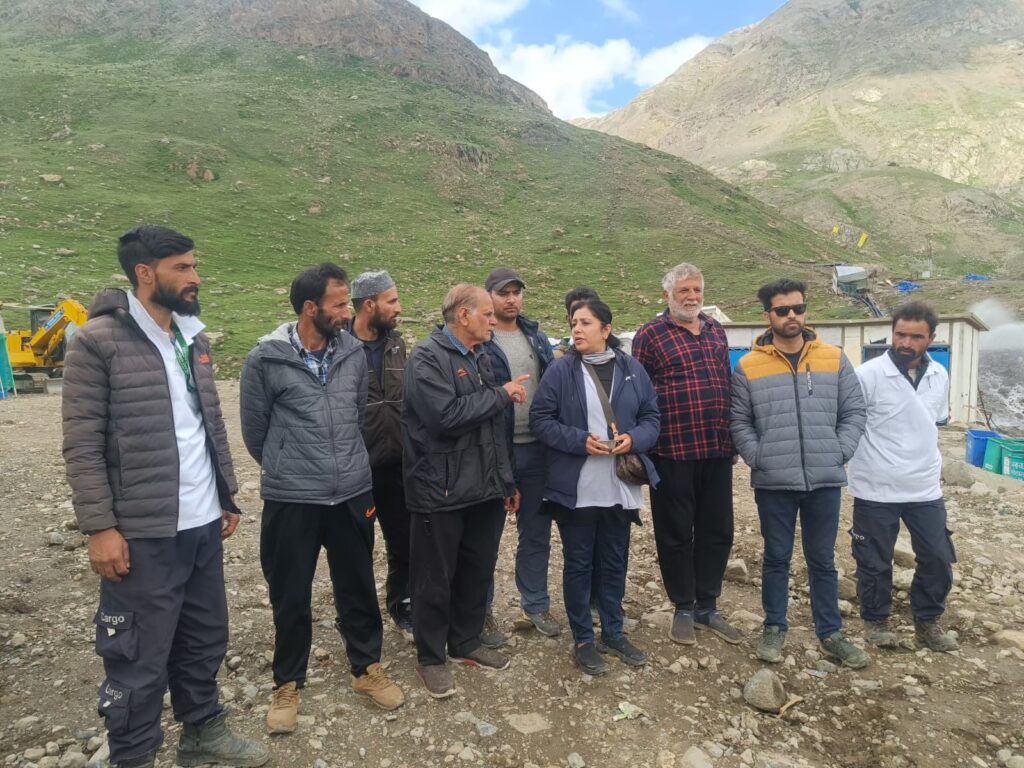SANJY-2024: DG Rural Sanitation J&K Reviews Sanitation Facilities at Poshpathri, Panjtarni, MG Top
PAHALGAM, AUGUST 03: In a concerted effort to ensure top-notch sanitation facilities for the ongoing Shri Amarnath Ji Yatra 2024, Director General Rural Sanitation J&K, Anoo Malhotra, conducted a comprehensive review of the arrangements at Poshpathri, Panjtarni, and MG Top on the Pahalgam axis.

During her visit, Malhotra was accompanied by Camp Director and Additional Camp Director Panjtarni, Nodal Officer Sanitation Panjtarni and Poshpathri, senior Managers of QSS, GRAVITY and Urban Enviro.
The inspection aimed to assess the consistent functionality of sanitation facilities, ensuring they meet the highest standards for the comfort and safety of pilgrims.
During her visit, the DG was apprised of the waste collected and the measures taken to manage and dispose of it properly. The Service Providers briefed that since the commencement of Yatra to till date 340 tonnes of waste was generated on both the axes, out of which 290 tonnes of waste was processed. 43 tonnes of Inert waste was also generated.
145 tonnes of wet waste was generated and processed properly, while as, 150 tonnes of dry waste was also processed.
Malhotra emphasized the importance of maintaining clean and hygienic conditions throughout the pilgrimage. She directed the officers to monitor the sanitation services continuously and address any issues promptly- particularly from Panjtarni to Sheshnag.
While speaking to Sanitation Nodal Officers and Services Providers she said, “The commitment to providing a clean and safe environment for devotees remains a top priority, reflecting the collective efforts of the administration and stakeholders involved in the yatra,” adding, “Our goal is to offer pilgrims a seamless and spiritually enriching experience, complemented by impeccable sanitation facilities. We are dedicated to upholding the sacredness of this pilgrimage by maintaining cleanliness and hygiene.
The DG’s visit also included an assessment of waste management practices, the availability of potable water, and the effectiveness of awareness campaigns promoting cleanliness. Special emphasis was placed on the segregation, clearance of surrounding areas falling enroute to holy cave and proper disposal of waste, with guidelines being reiterated to ensure zero landfill and minimal environmental impact.






